
There is nothing more romantic than walking under an arbor or pergola covered in fragrant roses. Or, picture the rose covered cottages of England and New England. Climbing roses can also add a colorful vertical accent to your garden. Here are some tips that will help you get started with your climber.
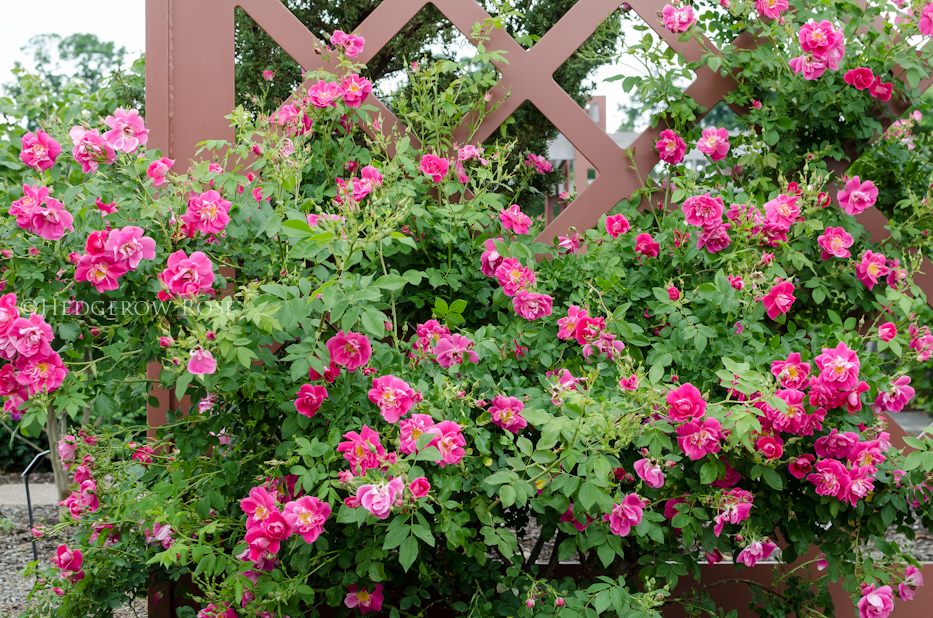
Climbing roses need a structure – an arbor, pillar, pergola, or lattice – on which to grow. Make sure your structure is sturdy enough to support the weight of your climber. Some climbers can reach 30 feet or more while others stop at 10 or 12 feet. Note that unlike beans or peas, roses will not voluntarily climb a structure and it will be up to you to get them onto the structure – it is remarkably frustrating to have a beautiful arbor and a rose happily growing in exactly the wrong direction!

Like all roses, climbing roses want full sun so site your rose carefully. Once trained on a structure, your rose will not be easily moved.
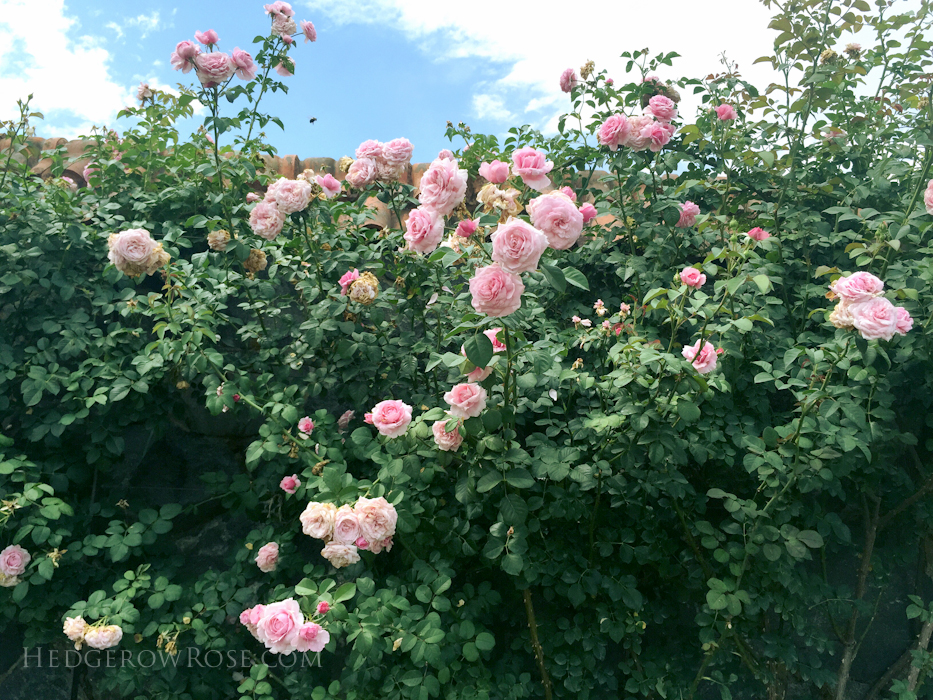
Plant your rose at twelve inches or more from the structure, not right up against it. If you are planting up against a house or shed, remember that the eaves may decrease water from rain and you will need supplemental water.
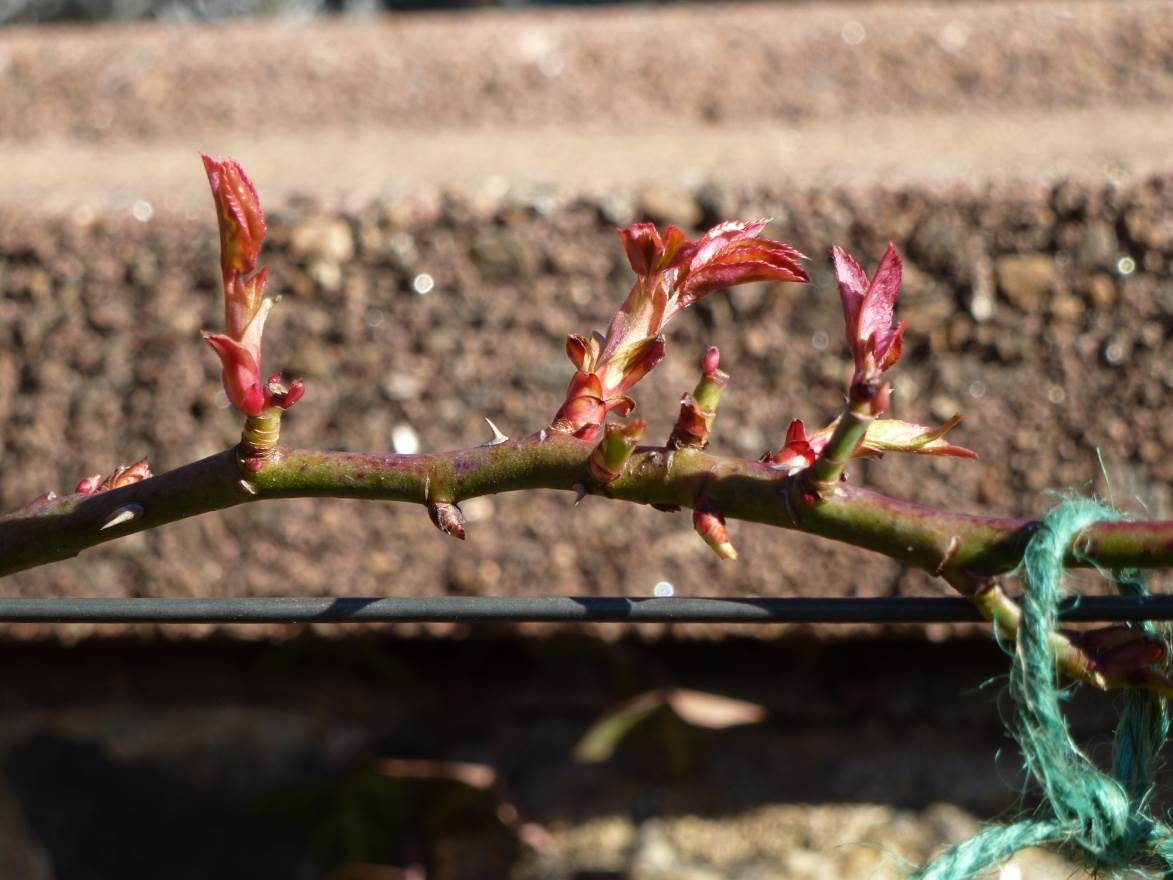
Climbing roses consist of two types of canes – leaders and laterals. Lead canes are the long canes that come out of the ground and are usually the ones you attach to your structure. Lateral canes come off of lead canes and produce flowers. The more parallel to the ground your lead canes, the more laterals they will produce and the more blooms you will have. If you let your climber grow straight up a structure, you will only have blooms along the top. If you want to wrap your climber around a pillar, wrap as parallel to the ground as possible. It is definitely harder to wrap roses around a pillar than to train on an arbor or similar structure.
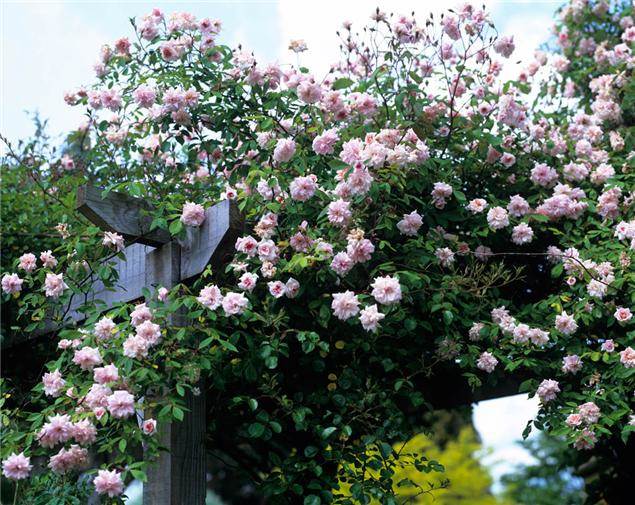
Young canes are the most supple and amenable to bending or shaping. Plan on tying up your climber several times during the growing season so you can work with new growth. Twine and string are good choices for tying canes.They are softer than wire which potential could cut or damage the canes.
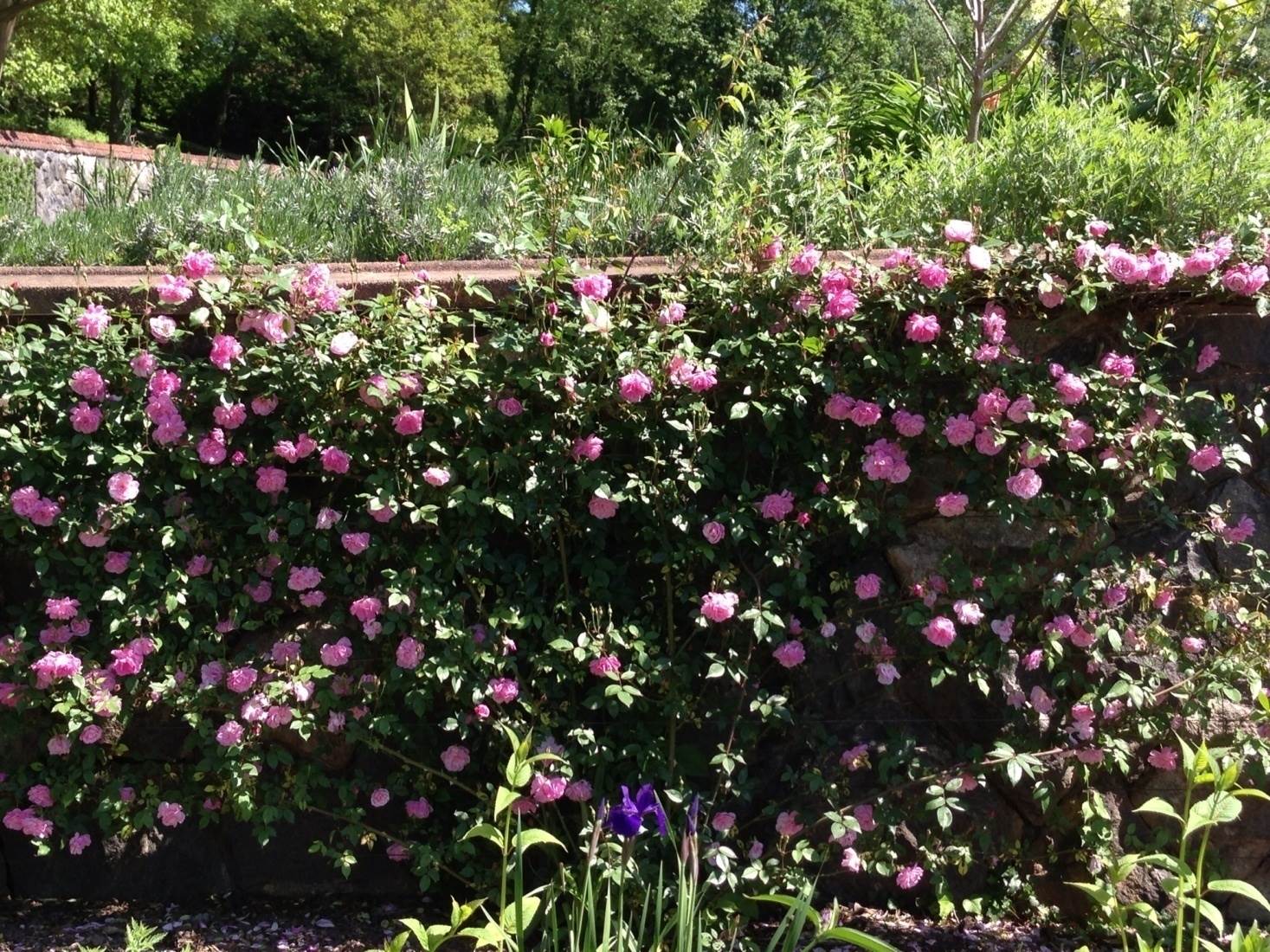
The care of climbing roses is similar to that of their non-climbing brethren. They need the fertilizing and watering and they are susceptible to the same diseases. Pruning is different, however – you still want to remove dead, damaged or diseased canes. But you want to leave the lead canes as long as suits your taste and structure. You can prune back the laterals, however, to keep them in check and to promote re-blooming. For more information about pruning climbing roses, contact your local rose society.
About the Author:
Judy Deutsch is an American Rose Society Consulting Rosarian, Buncombe County Master Gardener and past President of Asheville Blue Ridge Rose Society.
Photos provided by Judy Deutsch and Laurie Lewis





Great information! I wish I had an advisor when I planted too many climbers in one area. I think 7 is what I put in about five years ago. Harlekin, Zephirine Drouhin, Climbing Tropicana, Antike 89, Souvenir de Claudius Denoyel, Climbing Peace, and some unknown Rambler. All are still surviving. Pruning is an extreme chore. I guess we all learn from mistakes.
That we do! 😉